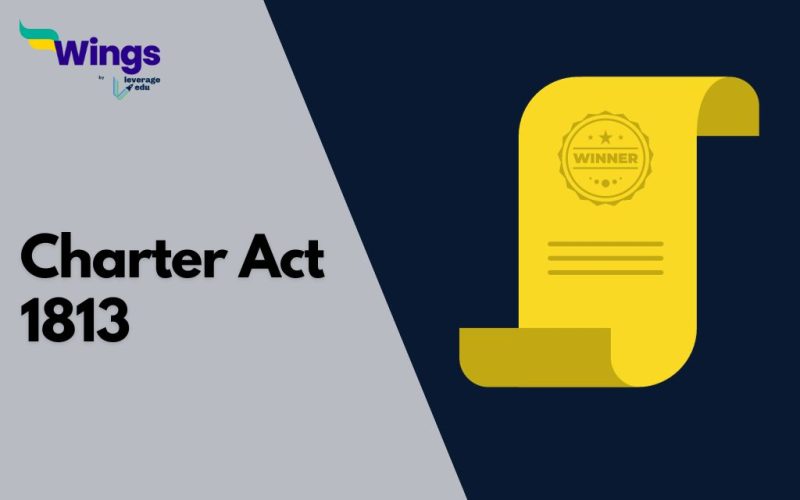The Charter Act of 1813, also known as the East India Company Act of 1813, was a piece of legislation passed by the British Parliament that renewed the charter of the British East India Company and continued its rule in India for another 20 years. It was a legislative milestone during the British colonial rule in India and had far-reaching implications for education, religion, and governance in the subcontinent. In this blog, we will delve into the key provisions and the historical context surrounding this significant piece of legislation.
Historical Background
What was the Charter Act of 1813? To understand the Act of 1813, it’s essential to grasp the prevailing circumstances. By the early 19th century, British colonial rule in India was well-established. The East India Company had control over vast territories, and India was becoming an integral part of the British Empire. During this time, there was a growing sense of responsibility towards India’s socio-cultural and administrative aspects.
Major Provisions of the Act of 1813
However, the Act also made a number of significant changes to the Company’s powers and responsibilities, including:
- Ending the Company’s monopoly on trade: The Charter Act of 1813 abolished the Company’s monopoly on trade with India, except for the tea and opium trades. This was a major step towards opening up the Indian economy to British merchants and competition.
- Establishing a Board of Control: The Act also established a Board of Control, which was given the power to supervise the Company’s administration of India. The Board of Control was appointed by the British Crown and was responsible to Parliament.
- Appointing Christian missionaries: The Act also permitted Christian missionaries to enter India and preach their religion. This was a controversial provision, as it was seen by some as an attempt to undermine Hinduism and Islam.
- Political Reforms: The Charter Act of 1813 introduced important political reforms. It expanded the Governor-General’s Council to include four additional members, thus broadening the decision-making process.
The act was passed by the British Parliament to renew the company’s charter, but it included a section that altered the course of education in India.
Also Read – Gurukul Education System in Ancient India
Provisions Related to Education
One of the most remarkable aspects of the Charter Act of 1813 was the allocation of funds for the promotion of education in India. It earmarked one lakh rupees (a substantial sum at the time) to be utilized for the “promotion of education among the inhabitants of British India.”
The funds were to be utilized in two significant ways:
1. Promotion of European Learning: A portion of the allocated funds was dedicated to the promotion of European literature and scientific knowledge in India. This reflected the British colonial policy of introducing Western education to Indian society.
2. Support for Vernacular Education: Another portion of the funds was intended for the support and maintenance of schools that taught Indian vernacular languages. This marked an early effort to encourage education in local languages.
Impact on Education
The Charter Act of 1813 set the stage for significant developments in the education sector:
1. Emergence of English Education: The allocation of funds for European learning paved the way for the spread of English education in India. English became a medium of instruction in schools and colleges, gradually gaining prominence.
2. Growth of Vernacular Education: The support for vernacular education led to the establishment of schools that taught in local languages. This approach was instrumental in making education more accessible to a broader segment of the Indian population.
3. Seeds of Modern Education: The act laid the foundation for the modern education system in India, which would later evolve into the present-day educational framework. It played a crucial role in shaping the education landscape of the country.
The Charter Act of 1813 was a complex and controversial piece of legislation, but it had a profound impact on the course of Indian history. It marked the beginning of a new era of British rule in India, one that was characterized by more direct British intervention and a greater emphasis on economic development and education.
FAQ’s
The primary purpose of the Charter Act of 1813 was to renew and amend the charter of the British East India Company. However, it is often remembered for its significant provisions related to education in India. It allocated funds for the promotion of education, both in European and vernacular languages, marking a crucial step in shaping the education system in colonial India.
The Charter Act of 1813 had a profound impact on education in India. It allocated funds for the promotion of European learning, which led to the spread of English education. Additionally, it supported vernacular education, making it more accessible to the local population. This act laid the foundation for the modern education system in India, with English becoming a prominent medium of instruction and vernacular languages gaining recognition in the educational landscape.
While the educational provisions are the most well-known, the Charter Act of 1813 also contained other important clauses. It allowed Christian missionaries to enter and propagate their faith in India, which had a lasting impact on Indian society. Furthermore, it introduced changes in trade regulations, including the opening of certain trade routes and relaxing trade restrictions, which affected the economic landscape of British India.
This was all about the Charter Act of 1813 and the interesting facts about the most crucial event in Indian history. To learn more about interesting historical legacies, events, and facts, follow Leverage Edu on Facebook, Youtube, and Instagram!
 One app for all your study abroad needs
One app for all your study abroad needs













